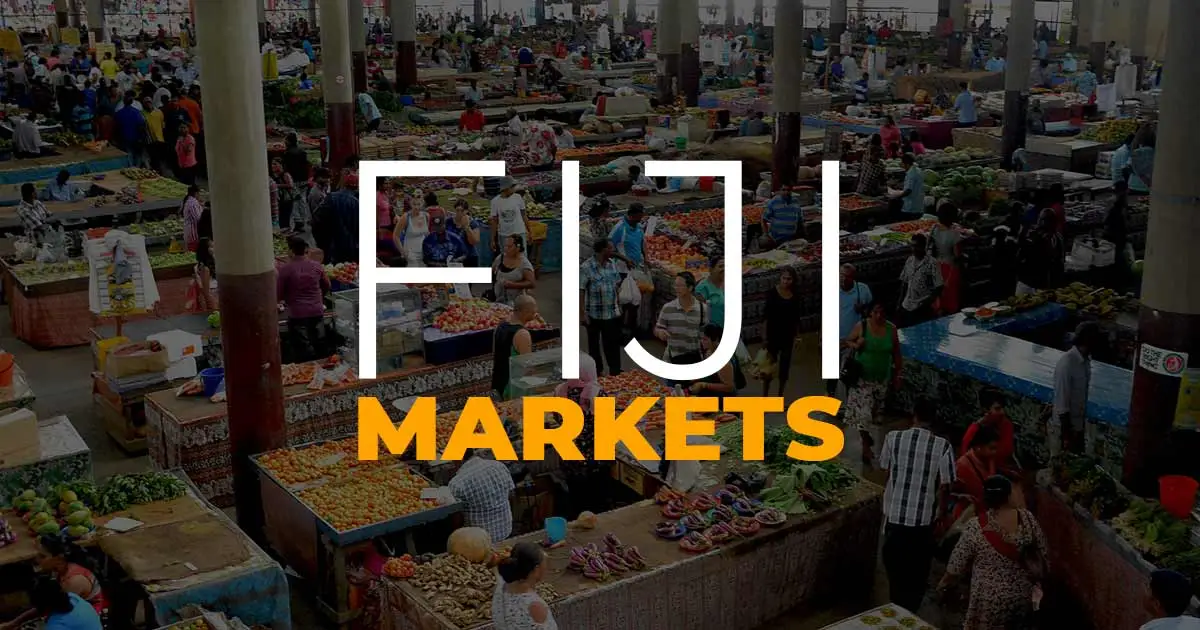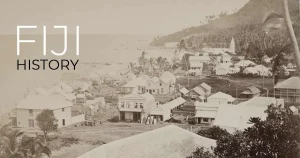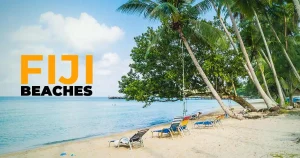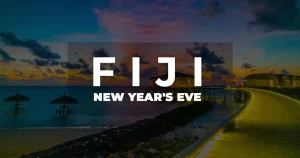The first thing you notice about Fiji isn’t the sea. It is the people: their relaxed smiles, their laughs, and how they can make you feel at home in minutes. To really understand this island’s warmth, you need to go where everyday life unfolds in its markets. The air is filled with chatter, the scent of coconuts, and piles of bright tropical fruit. Every stall tells a story, every handshake feels genuine. If you want to see the real Fiji, beyond the resorts and ocean views, spend a morning exploring these 5 Fiji Markets, each one a window into the soul of the islands.
5 Fiji Markets You Must Visit
Suva Municipal Market: The Beating Heart of the Capital
Suva Municipal Market is where Fiji’s energy gathers every morning. It is located close to the waterfront, full of voices, colours, and the earthly aroma of fresh produce. The locals come in with their baskets of taro, cassava, bananas, pineapples and bundles of kava roots, all tied using string. The aisles are broad yet never empty as people are always talking, laughing and sharing the news of the day. You can try the 15 Must-Try Drinks in Fiji and top 10 Fijian Cuisine to guide your culinary adventures through the market.
The beauty of Suva Market is its cosiness. The vendors will wish you a happy Bula! and will frequently give you a sample of fruit. You can pick up woven mats, shell necklaces, or simple wooden carvings made by hand. It’s the perfect place to watch everyday Fiji: mothers haggling over prices, children chasing each other, and men loading trucks for the next village delivery.
Don’t rush through. Stop for a chat, ask questions, try a babakau, a soft, golden Fijian doughnut that tastes like sunshine. You’ll leave with more than souvenirs; you’ll carry a memory of Fiji’s heart beating in the bustle of its people.
Nadi Handicraft Market: The Gateway to Fijian Creativity
Just minutes from Nadi International Airport, the Nadi Handicraft Market is often a traveller’s first meeting with Fiji’s soul. The market is small but full of charm, each corner bursting with handmade treasures. You’ll see rows of wooden bowls carved from native timber, colourful sarongs fluttering in the breeze, and tapa cloths painted with traditional patterns.
Here, shopping feels like a conversation. The artisans are storytellers, proud to explain how their pieces are made and what they mean. Bargaining is friendly and full of laughter. If you’re wondering how much cash you need for five days in Fiji, plan around two to three hundred US dollars converted to Fijian dollars. Markets like this often prefer cash, though many larger stores accept cards.
The Nadi Handicraft Market would be the best place to find some thoughtful souvenirs, gifts bearing Fiji artistry. Each product is vibrant with culture, and it is not only handmade but heart-made. While market is a good starting point, you may also discover 10 Best Things to Do in Nadi for a mix of local sights, shopping, and cultural experiences.
Lautoka Market: The Sweet Soul of Sugar City
Lautoka, commonly referred to as the Sugar City of Fiji, has a sweet touch that extends way past its name. Its market is one of the cleanest and well-organised in the islands, and it does not lose its rustic beauty. You will be able to observe the lines of sugarcane, arranged in towers of gold, the heaps of ginger and turmeric in the morning sunshine and fishermen preparing and placing fresh catches found on the local coast.
The sense of community is what makes Lautoka Market unique. Vendors greet each other like family. You’ll hear laughter echoing between the stalls and the occasional call to share a bowl of kava. Many visitors wonder if it’s rude to refuse; it isn’t. Just smile, place your hand gently over the cup, and say, “Vinaka, maybe later.” Fijians understand and respect sincerity.
If you love cooking or want to bring home something local, buy a bundle of island spices or a bag of dried coconut chips. They capture the market’s essence: simple, natural, and full of warmth.
Sigatoka Market: The Green Heart of Fiji
One of the most beautiful markets in the country is located in the fertile Sigatoka Valley, the Salad Bowl of Fiji. Sigatoka Market is a celebration of abundance. Each stall is a sight of colour: bright red tomatoes, fresh lettuce, shiny eggplants and fresh herbs which scent the air. In the morning, the farmers come with baskets on their shoulders and take pride in the fruits that they have nurtured.
The energy here is gentle and genuine. Women in floral dresses sit behind neat displays of vegetables and honey jars, chatting easily with customers. Everything is fresh: the juicy mangoes and the soft taro leaves.
If you enjoy photography or simply people-watching, this market is a dream. Capture the smiles, the woven baskets, and the children helping their parents pack up at the end of the day. Sigatoka shows you Fiji’s deep bond with its land, and with each other.
Savusavu Market: The Hidden Gem of Vanua Levu
Savusavu Market is a waterfront market located on the second-largest island of Fiji, Vanua Levu. It is calming, almost a secret, with those who have time to discover it. The market is smaller than those on the main island but equally hearty.
Coconuts, papayas, and kava roots are sold by the farmers on woven mats. The fishermen come with their catch directly into the blue bay. Some stalls offer homemade coconut oil, soaps, and lotions, all made from ingredients grown nearby.
Because Savusavu is less crowded, every encounter feels personal. People have time to talk, to tell stories, to laugh with you. It’s the perfect market for slow travellers, those who want to taste Fiji at its purest pace. Sit by the sea afterward with a bag of fresh fruit and watch the boats drift by. You’ll understand why this island, and its people, linger in your heart long after you leave.
Before You Go: Helpful Tips for Exploring Fijian Markets
Visiting local markets in Fiji is easy, but a few small tips can make your experience smoother and more meaningful.
- Bring Fijian dollars. Most small vendors prefer cash. While credit cards work in cities, local currency makes buying simpler and more personal.
- Go early. Mornings are the best time to visit. You’ll find the freshest produce and catch locals before the midday heat.
- Dress modestly. Light clothing is fine, but cover your shoulders and knees as a sign of respect, especially in smaller towns.
- Greet everyone with “Bula.” It’s more than a word, it’s an invitation to friendship. Even a simple greeting opens hearts instantly.
- Try local food. Whether it’s a warm lolo bun filled with coconut cream or a handful of roasted peanuts, tasting something new connects you to the place in the sweetest way.
- Consider renting a car. Markets are scattered across islands, and having a rental vehicle from services like Aries Rental gives you freedom to explore at your own pace without relying on public transport.
If you’re curious where the world’s famous guests stay, Oprah Winfrey has spent time at The Wakaya Club and Spa, a private retreat that reflects Fiji’s natural beauty and serenity. Another celebrity favourite is Laucala Island Resort, owned by Red Bull founder Dietrich Mateschitz, known for its breathtaking views and privacy.
What I Wish I Knew Before Going to Fiji
Before visiting Fiji, most travellers imagine perfection, and it is, but in its own gentle way. What surprises many is how unhurried life feels here. Locals live by what they call Fiji Time. It means things flow slowly, naturally, and without stress. The ferry might leave later than planned, or a shop might open a little late, and no one minds. Once you let go of rushing, you start to enjoy everything more.
Bring reef-safe sunscreen, light cotton clothes, and insect repellent. Carry small bills for markets, and always keep a reusable water bottle. If you plan to shop or eat at local stalls, about 200 to 300 US dollars in Fijian currency is plenty for five days.
And yes, US dollars are accepted in a few tourist resorts and souvenir shops, but paying in Fijian dollars will give you better prices and make transactions smoother.
Conclusion: The Heart of Fiji Beats in Its Markets
Beyond the beaches and luxury villas, Fiji’s real magic lives in its people, and nowhere is that spirit stronger than in its markets. Visiting these 5 Fiji Markets You Must Visit is not just about what you buy, but what you feel. The joviality of sellers, the smell of coconuts, and the feeling of mutual smiles, all will remain with you even after you have forgotten the islands.
Thus, next time you come to Fiji, spend one morning in one of the markets. Allow the sounds, fragrances and hues to enclose you. Talk to people, taste something new, listen to stories. On such simple human occasions, you will find the Fiji that no postcard can ever describe, the Fiji that lives, breathes, and welcomes you home.
FAQs
What I wish I knew before going to Fiji?
Life runs on Fiji Time, slow, easy, and full of joy. Pack light clothes, reef-safe sunscreen, and insect repellent, and simply go with the flow.
Is it rude to refuse kava in Fiji?
No, it’s not rude. In case you do not like kava, just smile and say “Vinaka, maybe later.” Honesty and politeness are valued by Fijians.
How much cash do I need for 5 days in Fiji?
200 to 300 US dollars in Fijian currency suffices to cover meals, local shopping and small trips.
Are US dollars accepted in Fiji?
Certain resorts and tourist shops will take the US dollars, but the Fijian dollars (FJD) are always better and will be accepted everywhere.





